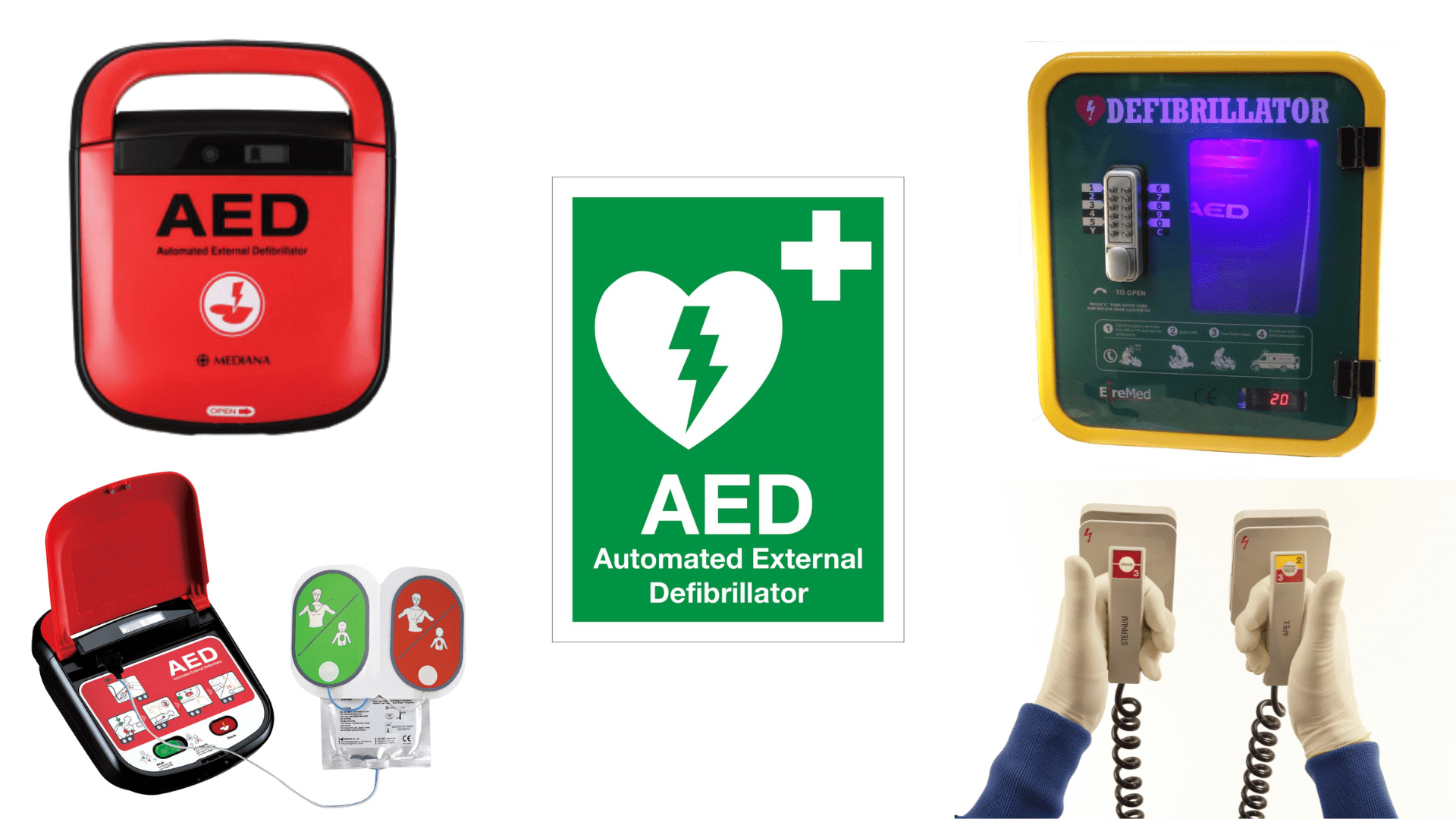Over the years you might have heard people mention the word ‘defibrillator ‘or ‘AED’. The two are the same. When people say AED this means’ Automatic External Defibrillator. The device is used to help save a person’s life when in Sudden Cardiac Arrest by sending a safe electric shock or pulse to the person’s heart. This is when the heart is in ventricular fibrillation mode which is an abnormal heart rhythm. The person should also be given CPR. Statistics show that a person has a 6% chance of surviving an out of hospital Sudden Cardiac Arrest with just CPR. But the chances of survival go up to as high as 76% when a defibrillator is used too.
The first defibrillator was invented in 1930 by William Kouwenhoven who was an electrical engineer. He studied electric shocks and the effects on the human heart. His studies helped him come up with a machine that could effectively jump start the heart. The first defibrillator to be used on a human was invented by Professor Claude Beck in 1947. The amazing Professor Beck worked out that a cardiac arrest or ventricular fibrillation happened quite often to healthy hearts. His thinking was that hearts are too good to die and there must be a way of saving the hearts and people’s lives!
Over the years the technology got better and in 1965 the first portable defibrillator was developed by Professor Frank Pantridge. This wonderful Professor worked out that treating a person having a cardiac arrest early was vital and could save lives. So thanks to Professor Pantridge the first defibrillator was installed in an ambulance in Belfast January 1966. It was powered a the car battery and weighed a colossal 70kg. When thinking of a defibrillator you might also imagine someone standing with paddles in each hand shouting ‘stand clear’. The paddles are no longer used. These days we use electrode pads.
Defibrillators UK
Did you know that we have over 10,000 defibrillators/AED’s in the UK? And the numbers are growing all of the time. We now have automatic external defibrillators everywhere. You can find them on the side of a community centre, parks, workplaces, supermarkets, shopping centres and lots more. If you haven’t already, you should look for them and remember where they are. You might be thinking ‘Where is my nearest defibrillator/AED’? Look online as there are lots of useful websites with this information. You can also use defibrillator apps – also available online. Some apps even supply CPR instructions which are amazing.
When you go out try and look for defibrillator in a storage cabinet with a sign above. The cabinets are usually yellow with a green AED sign with a sign above saying AED or Defibrillator. The devices are kept in these cabinets for various reasons. Firstly, for safety. You will find that most cabinets have a keypad lock. If you ever have to get a defibrillator from a cabinet that is locked with a keypad lock – don’t worry – call 999. The emergency services should have a record of the device and cabinet. They will give you the code over the phone. Other reasons they are stored in a bright outdoor cabinet is because people can see them they usually need to be kept warm! WHY?
If you purchase a defibrillator and need to keep it in an outdoor cabinet you must check the lowest temperature the defibrillator will work at. We supply the Mediana A15 AED which operates from zero degrees. So we would recommend that if this device is kept outside that you store it in a heated AED cabinet. This moves onto monitoring and care. A defibrillator services and checks itself every day, week and month. BUT, if you buy a defibrillator you must make sure that someone monitors it at least weekly. They all have an indicator on the front which will say it’s ok or it’s not ok.
If the defibrillator indicator is saying that the device is not ok this could be for various reasons. Defibrillators all come with a set of electrode pads and a battery/batteries. You must check the dates on the electrode pad and battery. The standard life span of defibrillator pads are 2 years and the batteries 5 years if not used (standby). Make sure you check this data when you get your defibrillator and make a note of the dates as you must make sure that you device is working all of the time!

